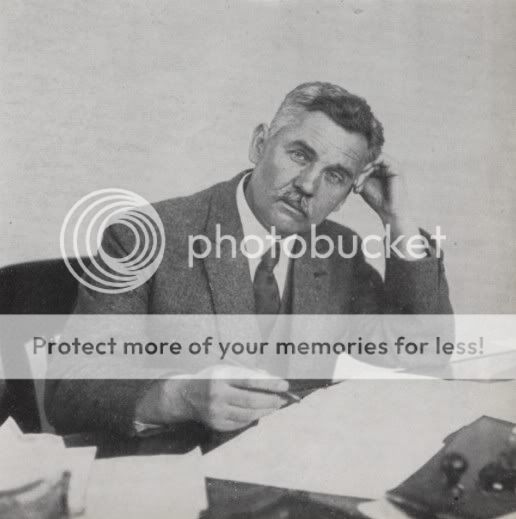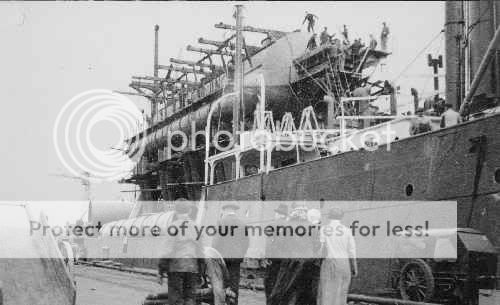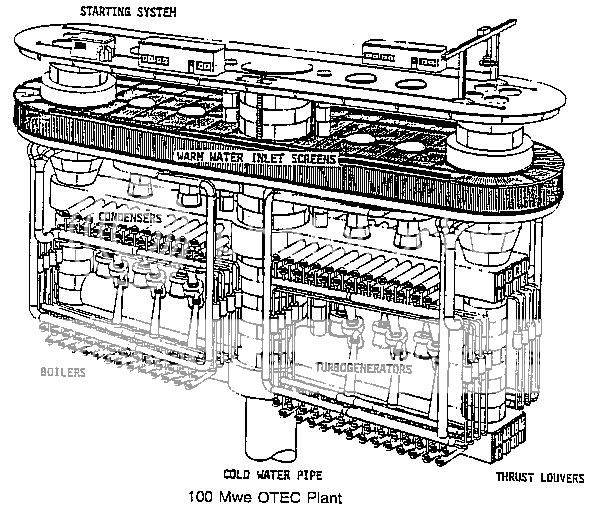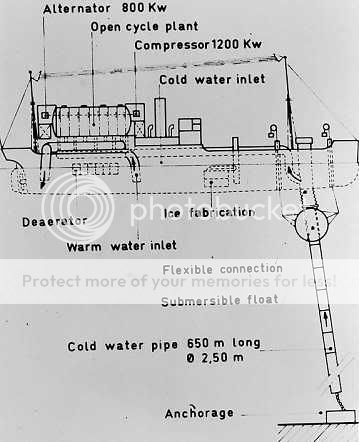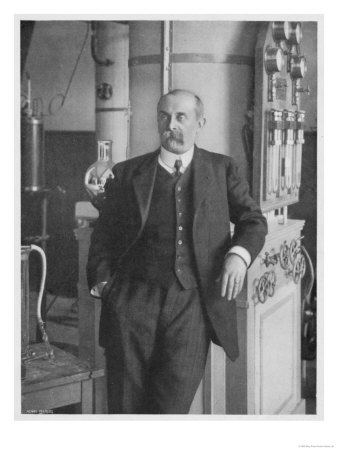This timeline is a spin-off set in Hendryk's "Superpower Empire: China 1912" TL (the latest version of which can be read here, and which has various other spin-off stories here).
The basic premise of The Devil & the Deep Blue Sea is, well, imagine a world where the vast expanse of the tropical seas hosts constructions like this:
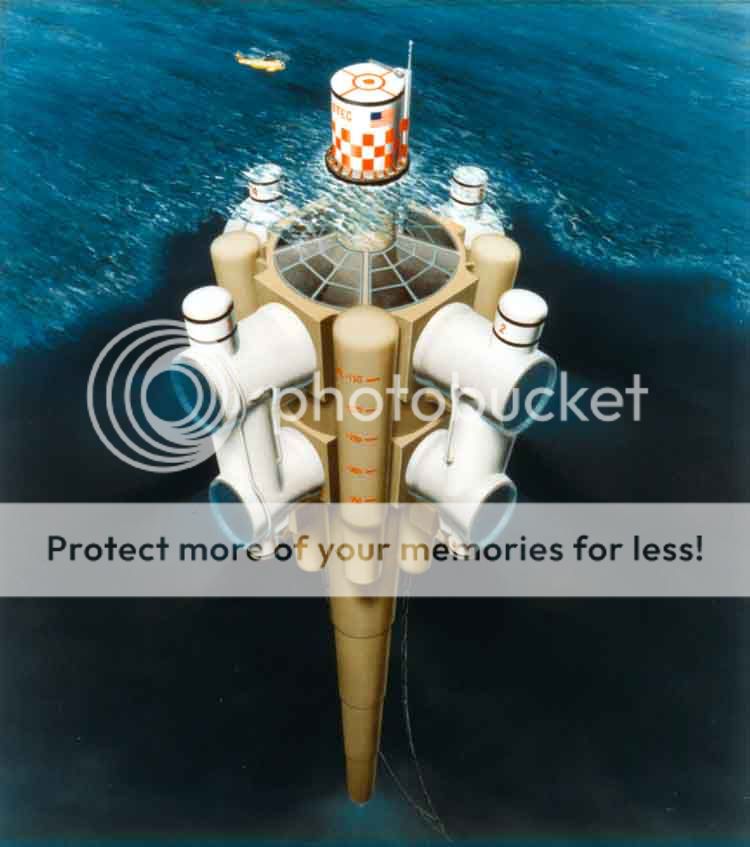
This is a world where when people talk about harnessing the power of the seas, they aren't just using a metaphor.
This is a world where ocean thermal energy conversion (OTEC) is an alternative energy source, and quite a successful one.
Ocean thermal energy conversion relies on the fact that when the oceans are heated by the tropical sun, it creates a difference in water temperature. The surface waters are blissfully warm, while a kilometre or so down, the waters are cold and dark.
Where you have a difference in heat, then there's potential. Find a way to pump up cold dark water from the deeps, mix it with warm surface water, and you can use it to create electricity - and other things, too.
OTEC takes two basic forms. There's an open cycle form where the warm and cold water are allowed to mix, like this:
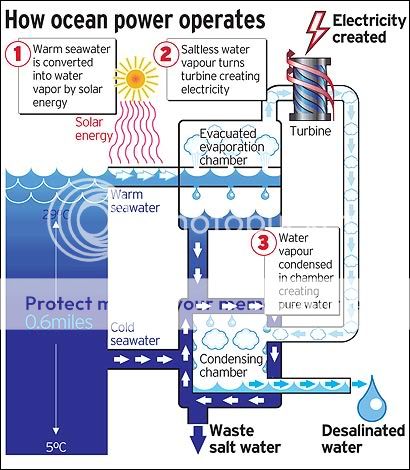
Or there's a closed-cycle variation, where everything is kept separate, like so:
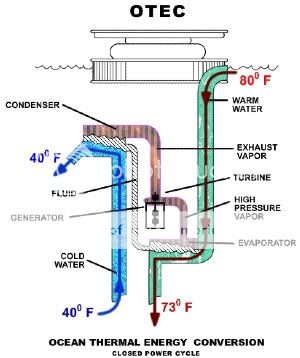
If set up properly, OTEC can be used to generate electricity without needing fuel of any sort, just drawing on the heat of the oceans. Low running costs, and power which can be used to generate electricity - or a variety of spin-off applications.
That's the basic concept, of course. In OTL, the technology has been successfully applied at an experimental level, but it has not yet been turned into commercial-scale electricity production.
In the world of The Devil & The Deep Blue Sea... things are quite different.
The basic premise of The Devil & the Deep Blue Sea is, well, imagine a world where the vast expanse of the tropical seas hosts constructions like this:

This is a world where when people talk about harnessing the power of the seas, they aren't just using a metaphor.
This is a world where ocean thermal energy conversion (OTEC) is an alternative energy source, and quite a successful one.
Ocean thermal energy conversion relies on the fact that when the oceans are heated by the tropical sun, it creates a difference in water temperature. The surface waters are blissfully warm, while a kilometre or so down, the waters are cold and dark.
Where you have a difference in heat, then there's potential. Find a way to pump up cold dark water from the deeps, mix it with warm surface water, and you can use it to create electricity - and other things, too.
OTEC takes two basic forms. There's an open cycle form where the warm and cold water are allowed to mix, like this:

Or there's a closed-cycle variation, where everything is kept separate, like so:

If set up properly, OTEC can be used to generate electricity without needing fuel of any sort, just drawing on the heat of the oceans. Low running costs, and power which can be used to generate electricity - or a variety of spin-off applications.
That's the basic concept, of course. In OTL, the technology has been successfully applied at an experimental level, but it has not yet been turned into commercial-scale electricity production.
In the world of The Devil & The Deep Blue Sea... things are quite different.
